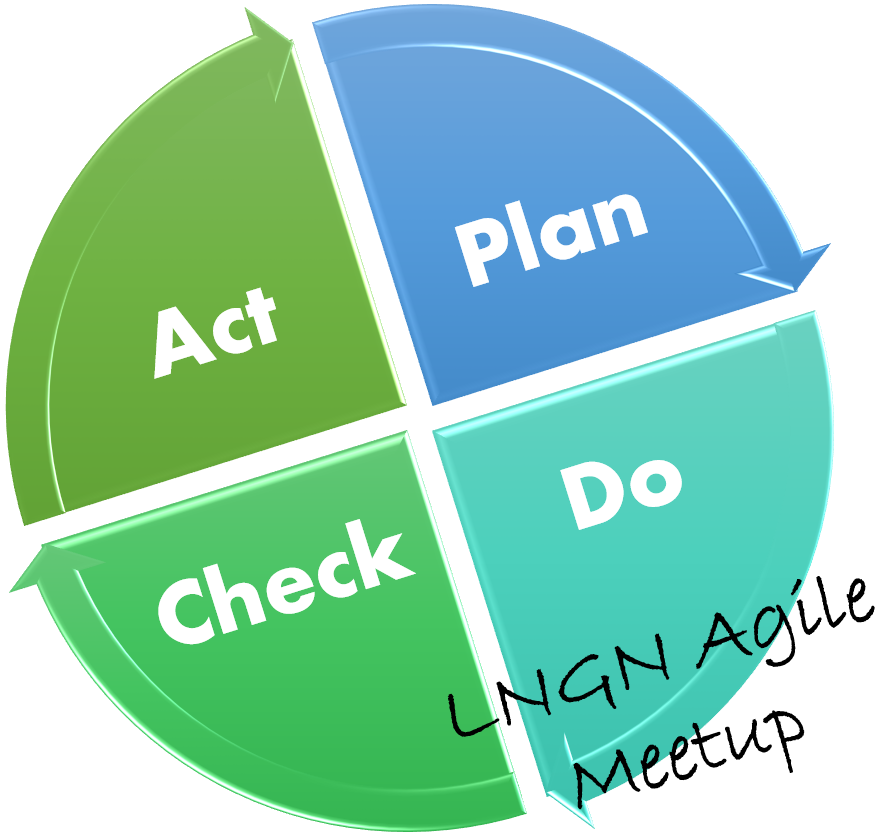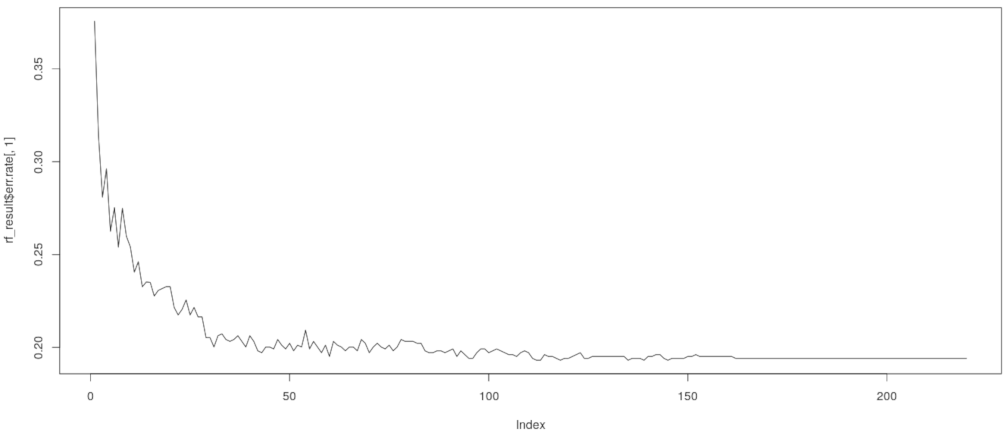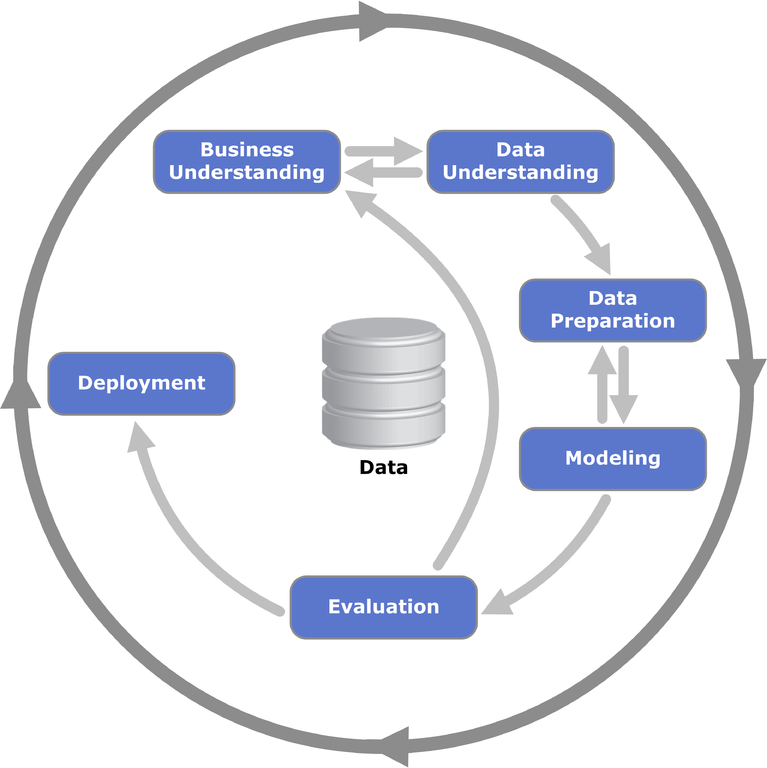CRISP DM

Agile Methoden fürs Machine Learning
Über mich
- Marcel
- Software Entwickler bei CHECK24
- Speaker
- Co-Organisator des LNGN Agile Meetup

LNGN Agile Meetup
Themen
Treffen
- Moderne Softwareentwicklung
- Agile Methoden
- lngn-agile-meetup.github.io
Treffen
- Einmal im Quartal

CRISP DM
-
Cross-Industry Standard Process for Data Mining
- als Industriestandard konzipiert
- 1996 Entwickelt
- Offener Standard
Business Understanding
- Was sind die konkrete Ziele und Anforderungen?
- Grobe Vorgehensweise definieren
Business-Case
Hätte man auf der Titanic überlebt?
Hätte man auf der Titanic überlebt?
Data Understanding
- Analyse und Bewertung der Daten
- Mögliche Probleme der Datenqualität ermitteln
# Read the dataset
titanic.full = read.csv(file = "titanic.csv")
colnames(titanic.full)
# [1] "PClass" "Age" "Sex" "Survived" "Name"
summary(titanic.full) # Total of 1313
PClass Age Sex Survived Name
: 1 Min. : 0.17 female:462 Min. :0.0000 Carlsson, Olof : 2
1st:322 1st Qu.:21.00 male :851 1st Qu.:0.0000 Connolly, Kate : 2
2nd:279 Median :28.00 Median :0.0000 Kelly, James : 2
3rd:711 Mean :30.40 Mean :0.3427 Abbing,Anthony : 1
3rd Qu.:39.00 3rd Qu.:1.0000 Abbott, Joseph : 1
Max. :71.00 Max. :1.0000 Abbott, Edward : 1
NA's :557 (Other) : 1304
Data Preparation
- Daten zu unserem Zwecke aufbereiten
- Konstruktion eines Datensatzes zur Modellierung
# Factorize the Survived Flag
titanic.full$Survived <- as.factor(titanic.full$Survived)
# Filter Men and Women
titanic.only_men = titanic.full[titanic.full$Sex=="male",]
titanic.only_women = titanic.full[titanic.full$Sex=="female",]
# Calculate the Median age
age.median_male = median(titanic.only_men$Age, na.rm = TRUE)
age.median_female = median(titanic.only_women$Age, na.rm = TRUE)
# Overwrite values with Median Age
titanic.full[
is.na(titanic.full$Age)
& titanic.full$Sex=="male", "Age"
] = age.median_male
titanic.full[
is.na(titanic.full$Age)
& titanic.full$Sex=="female", "Age"
] = age.median_female
# Remove the Name
titanic.full$Name <- NULL
titanic.full <- titanic.full[titanic.full$PClass != "",]
# Get the new summary
summary(titanic.full)
PClass Age Sex Survived
: 0 Min. : 0.17 female:462 0:862
1st:322 1st Qu.:26.00 male :850 1:450
2nd:279 Median :29.00
3rd:711 Mean :29.54
3rd Qu.:30.00
Max. :71.00
Modelling
- Ermittlung des Modells
# Number of Rows
training.nrow = nrow(titanic.full)
training.size <- floor(0.75 * training.nrow)
# determine the dataset index
training.index <- sample(
seq_len(training.nrow),
size = training.size
)
# Split the full dataset in train and test data
titanic.train <- titanic.full[training.index, ]
titanic.test <- titanic.full[-training.index, ]
# install random Forest
install.packages("randomForest")
library(randomForest)
rf_result = randomForest(
formula = Survived ~ .,
data = titanic.train,
importance = TRUE,
ntree = 220,
nodesize = nrow(titanic.train)
)
Evaluation
- Wie gut ist unser Modell?
rf_result
# OOB estimate of error rate: 19.41%
plot(rf_result$err.rate[,1], type="l")

Evaluation
# Run over the test Dataset
rf_predict = predict(rf_result, newdata = titanic.test)
confusionMatrix <- table(titanic.test$Survived, rf_predict)
confusionMatrix
rf_predict
0 1
0 215 5
1 48 61
# calculate accurate score
(confusionMatrix[1,1] + confusionMatrix[2,2]) / nrow(titanic.test)
# 0.83
Deployment
- Integration des Modells
- Test des Modells mit Nutzerdaten
- Lessons learned
Aber in unserem Fall
- Daten nicht ausreichend
- Modell liefert unzureichende Ergebnisse
Agile Ansatz
-
Erfahrungen aus dem Produktivbetrieb
- Kompletten Prozess wiederholen
Agile Ansatz
- Bessere Daten bereitstellen
- Business Case anpassen
Agile Ansatz
- Daten weiter aufbereiten
- Verfahren ändern / verfeinern
Daten
- Stehen im Mittelpunkt
- Ohne Datenbasis sind nur schwer gute Werte zu erzielen
Fazit
- Agile Prozesse für ML verwenden
- Stets den Business Case validieren
- Kleine Arbeitspakete deployen und testen
